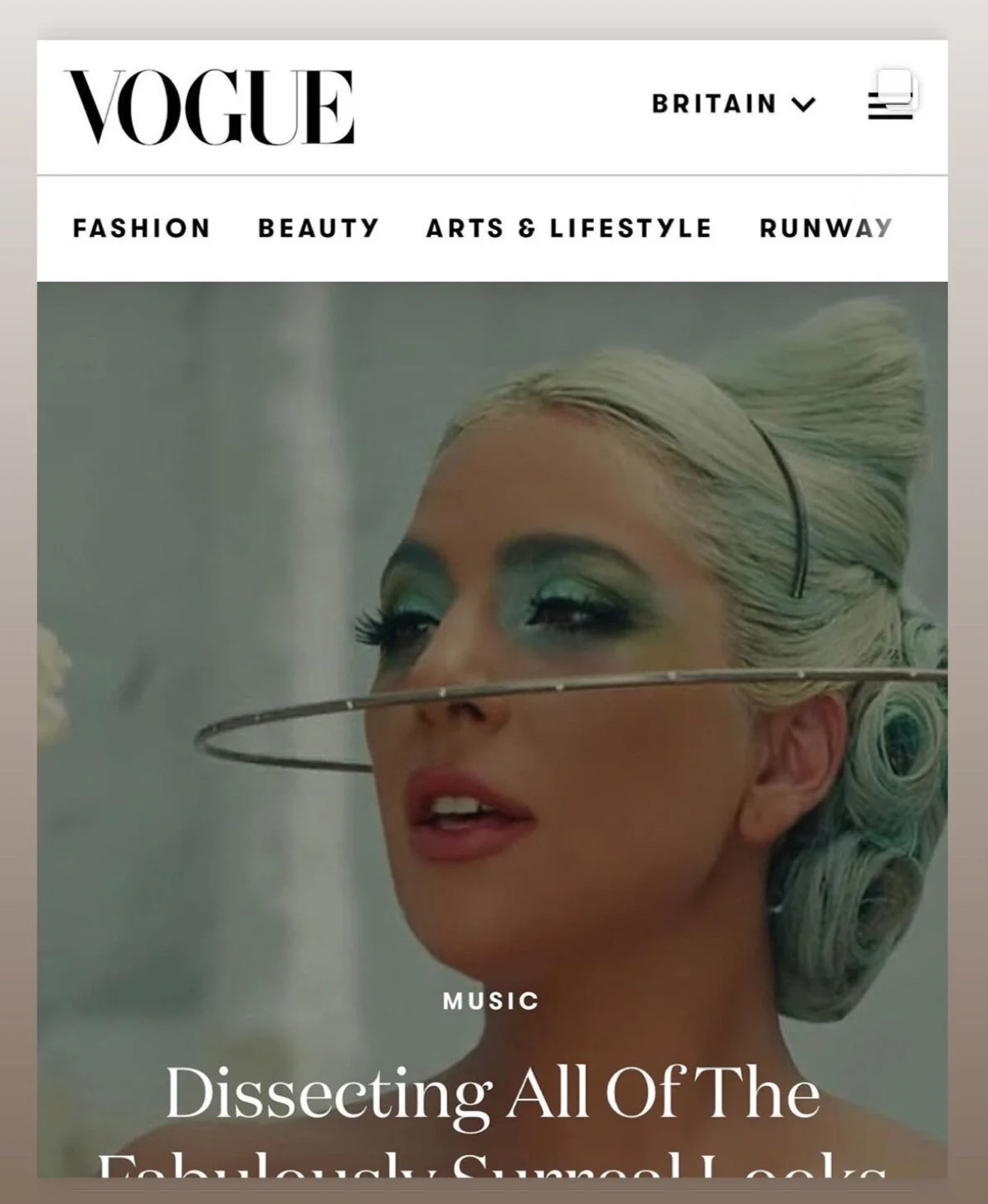Vogue Britain

You can’t miss Johannes Warnke’s designs. If you’ve watched Lady Gaga’s dramatic music video for “911”, or opened up this month’s Italian Vogue to see Adut Akech’s editorial, you will have been treated to the sight of his high-concept luxury. Warnke’s clothes brim with colour and texture, and move with their wearers to create arresting tableaux. Fresh from his graduation from Central Saint Martins in June, his clothing is already striking a chord with stylists and global pop superstars, a fact Warnke credits to social media. “Usually there is a press show, but [our class] was unable to have one due to the pandemic, so we all had to rely on social media,” said Warnke on the phone from Germany. “I’ve been fortunate that people have seen my work and found it interesting enough that they reached out to me. I was overwhelmed at first. I didn’t expect anything. I was at home dyeing fabrics and working from my childhood bedroom.”
Warnke’s interest in fashion asserted itself early on. “I remember sitting in the sandbox and watching my well-dressed kindergarten classmates all day long,” he says. “I played with Barbies and made clothes for them, cut out paper figures from magazines and dressed them differently every day, playing with different shapes and colours.” As a child in the picturesque municipality of Estenfeld in the Bavarian countryside, his earliest inspirations were the urbane teenagers from nearby cities like Frankfurt. “They represented cool clothes and all the things that I didn’t have access to in the countryside,” says Warnke.
Trained in modern dance since the age of six, Warnke has a keen understanding of movement and the body, which informs his designs just as much as youth culture and media. “It’s the first element,” he says. “I try to ensure that the person wearing the garment feels free to move. The garments are quite structured, but they are constructed in a way that allows movement. When you walk, it sways a little in the wind and flows with each movement. That’s something you can’t see in a picture, but on the catwalk, you’d notice.” Pina Bausch’s Tanztheater and the drama of modern dance are evident within his work. “Bausch’s plays, which are always a bit sociopolitical and ironic, showcase so many different emotions and contradictions, all you can express within contemporary dance,” says Warnke. “I think if I’d studied ballet, my clothes might be more structured or classical, but I like that they’re free, have movement, and are a bit sculptural as well.”
There’s a cerebral side to Warnke’s work, both in its visual impact and its origins. A psychology buff, he’s studied human behaviour complexities and considers observation a crucial element within his process. “I could sit for hours in the park and just people watch, [and] that’s a big part of the job,” says Warnke. “Designing is about observing and then translating what you see into your language.” His time at Central Saint Martins allowed him to develop that language further. “It’s where I unbuttoned a bit and explored who I was as a person and a creative,” says Warnke. “It was a game changer, coming from the countryside; it blew my mind that you were able to arrive at this place where everyone suddenly was allowed to be their full selves.”
That freedom gave Warnke the confidence to assert his design vision and align himself with like-minded mentors, namely Dutch designers Viktor Horsting and Rolf Snoeren of Viktor & Rolf. As an intern in the avant-garde brand’s couture department, Warnke learned to push the envelope unapologetically. “They taught me how to go crazy, the idea of not just giving half but doing everything with conviction and fully going for it,” he says. “Viktor and Rolf are incredible, and they make such conceptual collections that are never shy or polite. They give themselves the freedom to experiment and take things to the next level.”
One look at Warnke’s work, and it’s clear that he took those lessons to heart. His creations have an otherworldly quality, a transportive element that would make them seem at home in an editorial or a screen fantasy like Game of Thrones. Still, his designs address real-world concerns. “Sustainability should never compromise your designs, but the design shouldn’t compromise sustainability either; it should all be in harmony,” says Warnke, who dyes his textiles by hand and utilises materials with a low environmental impact, such as sustainable, cruelty-free silk and upcycled organza and tapestry. “Most of my garments have zero waste because they are draped without discarding any fabric,” says Warnke. “Because I dye them in my garden, I’m also able to control the water usage and use natural dyes. I’ve also been using bio-resin leftovers made from cornstarch that is biodegraded and so much better for the environment than plastic.”
As otherworldly as his latest collection is, its beginnings are very 2021. Social media and the rapid digitalisation of culture were the starting point, as was Wim Wenders’s 1987 film, Wings of Desire. The story of angels living among Berlin’s populace proved incredibly influential. “The idea of an angel observing the world from above, who can only view but can’t participate until one turns into a human and suddenly has sensory experiences and engages with the world,” explains Warnke. “I think it says so much about where we are now, at home watching Instagram stories and not participating. To what degree do we want to be everlasting? A selfie that exists forever on the feed, or do we want to exist in the impermanence of our real-world environments, engaging with them physically?” To capture those concepts, Warnke aimed to create clothing that gave the wearer a sensory experience, working with wind chimes, blinds, and shoes designed to be felt rather than only worn. The visual contrasts found in Brutalist churches and sacred architecture served to inspire. “It’s the clash of those elongated and curved shapes, between stained glass and concrete,” says Warnke. “When you enter those spaces, you’re usually quiet and focused; you realise the difference between interior and exterior. There is this mindfulness and meditative ambience that comes with being inside a church.”
The result is a wholly original series of looks seemingly destined to make their way onto the backs of the world’s most innovative stars. Warnke already has his sights set on the next challenge, taking his vision into brand new territories. “I would love to have amazing functional design products. Already there are functional elements within my collection, so I can see myself expanding on that,” he says. “Then, of course, it would be nice to go full circle and collaborate with the world of theatre and dance.” Watch this space!
This article originally appeared on Vogue.com








